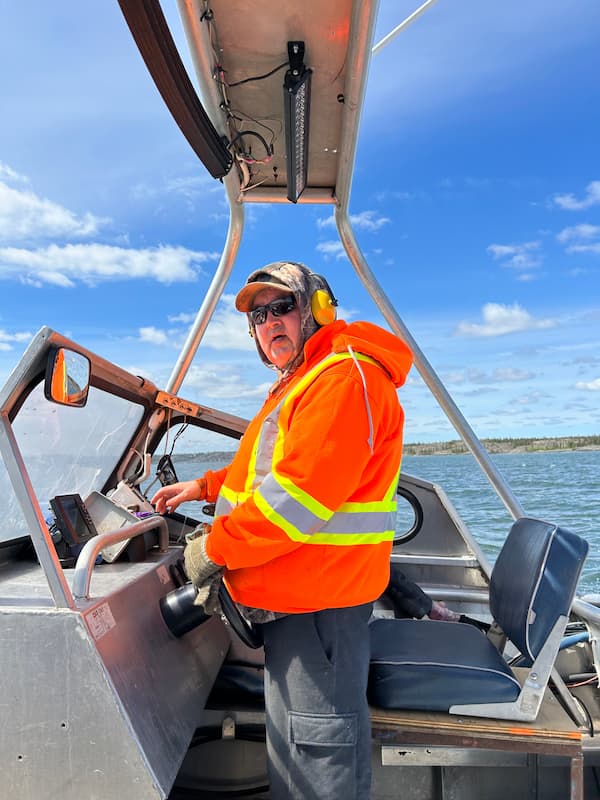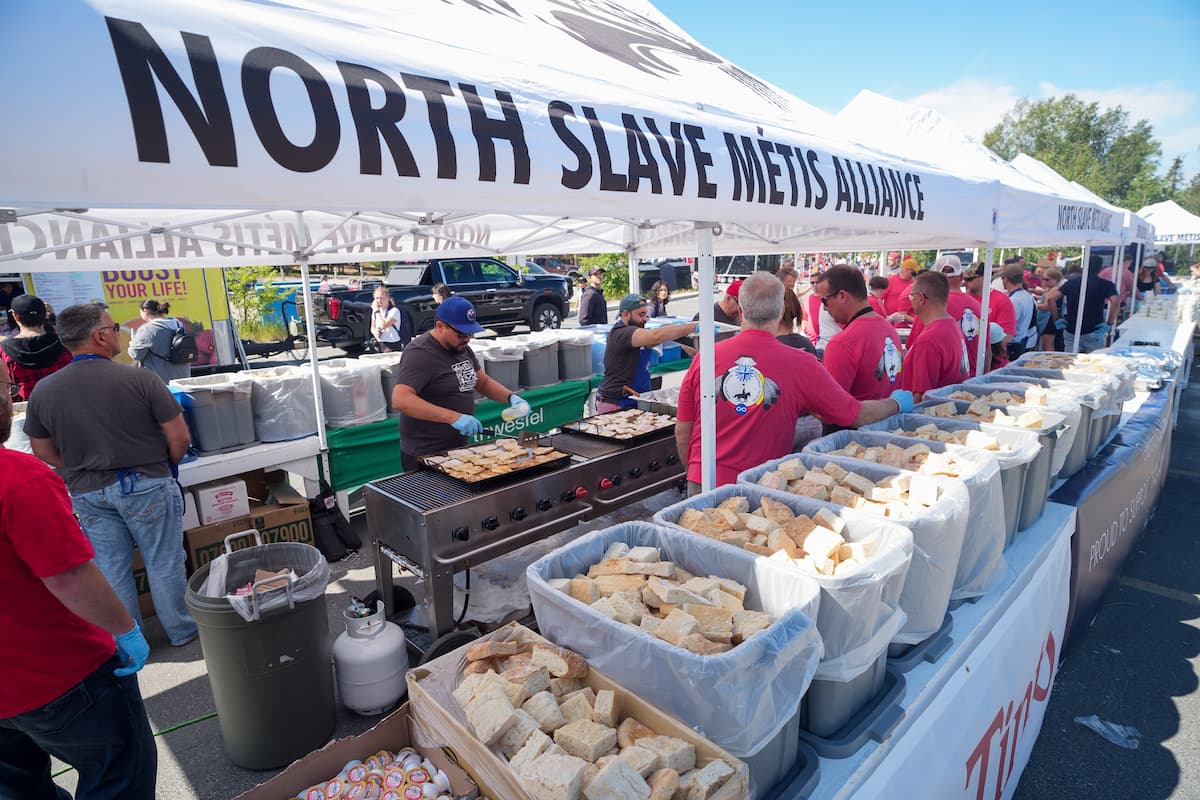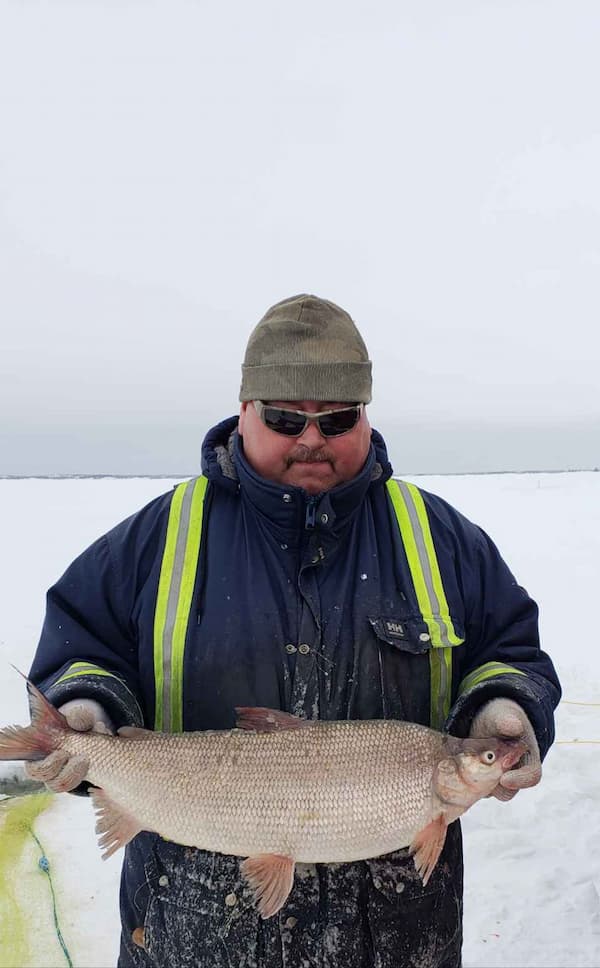
From lake to plate: Yellowknife’s fish fry and the fisherman’s tale
Fishing the depths of the Northwest Territories’ Great Slave Lake has been an important part of Barry Buckley’s life since childhood. Living by the ebbs and flows of North America’s deepest lake and harvesting its bounty is a lifestyle passed down to Barry by his father, Archie, who originally hailed from Saskatchewan.
“My dad used to fish there when he was younger, and then he moved up to NWT in the 1960s and started commercial fishing here. He fished in the lake all his life and used to sell fish up in Yellowknife for many years till he passed. And I, well, basically, I’ve been fishing all my life, and I grew up on the lake with my dad. So, fishing was just a part of life,” Barry says matter-of-factly.
Barry says he first started going out fishing with his dad when he was about 10 years old. He comes from a large Indigenous family with seven brothers and four sisters, and all spent time on the lake with their father. But now, 46 years later, he is the only one of Archie’s children still fishing, plying the massive northern lake for whitefish, trout, and other species as a commercial fisherman.
“Some of my siblings have passed on, and some are in different trades now, but I’ve never held another job; all I’ve done for work is fish,” Barry says.
Changing waters, evolving methods
Throughout his life and career as a fisherman, Barry has witnessed incredible changes, both in how commercial fishing is done on Great Slave Lake and in the environment from which he harvests.
“I’m old school, eh?” he says with a chuckle, “I use the old fishing methods, although I’ve incorporated a few new methods these days.”
These new methods include hydraulic pullers, depth sounders, fish finders, and VHF radios, which help him stay safe, find fish, and haul in his catch a bit more easily than in the past.
“When I was younger, we used to do it all by hand, pulling in our nets—the old style of fishing. That’s how I was brought up, so that’s what I learned, and then I’ve incorporated the newer stuff—better technology—as I got older,” Barry says.
One thing that remains the same, though, is Barry’s use of gill nets to catch fish. Gill nets are vertical nets that hang from a line suspended along the water’s surface by floats. The nets are usually weighted at the bottom. Fish get caught in gill nets when they swim into them, getting seized by their gills or wedged in the netting.

As for the changes to the lake itself, Barry notes that it is shallower now than it was in the past in many areas. He’s not sure what has caused the water level to drop, although he notes that climate change and dams in Alberta are two possible explanations.
According to Barry, the lower water level has less of an impact on fishing efforts near Yellowknife because the water around the city is “all pretty deep.” However, he notes that fishing on the south side of the lake is no longer as feasible as it once was because of its incredibly shallow depth.
Barry also notes that, in the past, commercial fishermen like himself used to make much longer journeys to find their quarry. These days, though, people fish closer to the city. He credits this change to the closure of the lake stations and the rising fuel cost.
“Years ago, we used to go way out into the lake, but now we can’t because the lake stations that used to dot the lake are all closed. So, we’ve got to fish closer to towns, like the City of Yellowknife. We also make shorter runs so that we don’t burn as much gas—and it’s safer,” he notes.
Feeding the masses
The open-water fishing season for Barry in Great Slave Lake generally runs from June until the end of October. He then takes most of November off as ice forms on the lake. He says his ice-fishing season typically runs from the end of November until the first week of May.
When Barry hauls his catch back to town, he is often swarmed by locals looking to acquire some of his fish.
“I usually sell my fish down at the boat dock, but sometimes I park downtown and sell fish from the back of my truck. Everybody knows when I’m in town. They spot me, and then everybody calls each other, then everybody comes in—it’s like I got a target on my back,” Barry says.
Barry says he sells fish however his customers like. He sells whole fish, or he can gut, descale and fillet fish for customers—the only thing he doesn’t do is cook it up.

In addition to hawking fish to consumers, Barry supplies fish for the North Slave Métis Alliance’s annual National Indigenous Peoples Day fish fry event. When asked how he got involved, he says he is well known in the community for his quality fish and fishing knowledge, and someone probably referred the organizers to him.
“I guess they just like my fish,” Barry laughs.

A fading art?
Barry is quick to highlight the positive impact that commercial fishing has had on both the community in Yellowknife and the economy. He notes that wild-caught fish from Great Slave Lake are a healthy source of protein, and that the industry provides jobs to fishermen and those supplying them with equipment, fuel, and other needs.
However, Barry laments that it’s getting more difficult for new fishermen to get started in the industry and that fewer young people seem interested in pursuing fishing as a career.
“It’s tough for people to get started as fishermen these days because of the price of equipment. I’ve had my stuff forever, so I am already set, but buying new machinery for fishing is not cheap,” Barry says.
He adds that training is also necessary, and prospective commercial fishermen should learn the ropes from industry veterans.
“And it’s not just learning how to catch fish; you must learn to read the land and water, and you’ve got to learn where to go. There are certain areas of the lake we do not go to because it is very easy to lose your gear,” Barry says.
Despite these hurdles, he seems optimistic that a new generation of fisherfolk will step up to continue in the profession. Barry notes that he trains people how to fish and is passing his knowledge along to one of his sons so that, one day, he can take over.
“I take my son out fishing with me, but he works in a diamond mine, so I get him for only two weeks at a time. I’m training him so he can take over where I leave off,” Barry says.
Asked if his son enjoys life on the water, Barry lets out a hardy laugh: “He has no choice; there’s not many other people interested in fishing, and somebody’s got to do it!”
Northwestel partners with the North Slave Métis Alliance each year for the annual National Indigenous Peoples Day fish fry in Yellowknife, providing volunteers and a monetary donation. This year, Northwestel donated $7,500 to support the event, along with delicious beef jerky purchased from Takhini River Ranch, an Indigenous-owned Yukon ranch.
